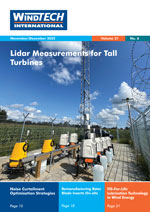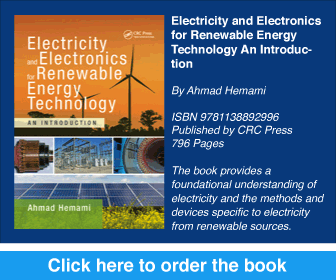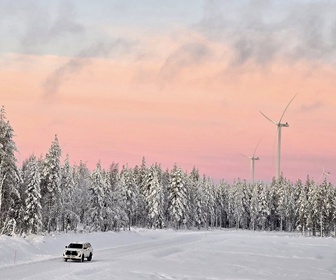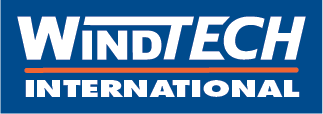- Category: Publishers Note
Offshore wind industry is confident of driving costs down by 2020
This year Global Offshore Wind will be organised in Manchester, UK, from 21 to 22 June. A big theme for the offshore wind business is to bring down the levelised cost of energy (LCOE) to be more competitive with other energy sources. And, according to a report from ORE Catapult (the second Cost Reduction Monitoring Framework), the industry is confident of driving costs below GBP 100/MWh by 2020 on the back of long-term market certainty. Offshore wind costs are falling fast, with 12 of 13 cost indicators on or ahead of target. The report shows that investment in turbine technology has delivered significant cost benefits, but that further reduction will need to come from the innovations in ‘balance of plant’, such as foundations, cables and substations. The report warns that investment in research and development and manufacturing industrialisation to deliver such improvements will only come with greater visibility of future rates of deployment and market size as government sets out details of contracts for new offshore wind farms.
- Category: Publishers Note
Records and Developments in the USA and Europe
In 2015 the US wind market saw good performance, with 8.6GW of added capacity, the strongest growth since 2012. Also Congress extended renewable energy usage tax credits by another five years. It looks like the US market is entering a new era and will flourish again, which is good news for all of us. The American Wind Energy Association (AWEA) will organise its annual show in New Orleans from 23 till 26 May. The set-up of the show differs a little from the past few years, with the exhibit hall and the educational sessions situated in one contiguous space. This set-up will help increase the interaction between the exhibitors and attendees of the show and hopefully the show will become a lively event again as it used to be before the global financial crisis. Of course Windtzech International will be present in New Orleans, so feel free to come along to pick up your personal copy of the magazine at the media point and/or to say hello.
- Category: Publishers Note
Growth in Europe and Around the World
Normally around this time of the year many of us are preparing for the annual wind energy conference organised by the European Wind Energy Association (EWEA). But EWEA has recently signed an agreement with Hamburg Messe und Congress GmbH to host its annual conference in parallel with the WindEnergy Hamburg exhibition at least till 2020 and thus has given up its spot in the first part of the year.
- Category: Publishers Note
Long-term consistent policies appear on the horizon
In my Publisher’s Note from the beginning of this year (and in many others over the years too) I urged for a long-term and consistent policy to really develop a global stable base market. And, finally, it looks like we might be heading that way based on events that happened in December 2015!
- Category: Publishers Note
Can global wind installations double in 5 years?
According to Anders Runevad, CEO of Vestas, cumulative wind energy installations worldwide may double within 5 years as falling costs help producers compete with conventional power. It is true that wind has become more competitive with conventional energy sources. recent study from Bloomberg New Energy Finance (BNEF) shows that the global average levelised cost of electricity (LCOE) for onshore wind decreased from US$ 85 per MWh to US$ 83 in 2015. On average the LCOE for conventional energy sources such as coal-fired generation and combined-cycle gas turbine generation increased in the same period to US$ 92.
- Category: Publishers Note
Worldwide wind market booming like never before
The worldwide wind capacity reached 392,927MW by the end of June 2015, out of which 21,678MW were added in the first six months of 2015. This increase is substantially higher than in the first half of 2014 and 2013, when 17.6GW and 13.9GW respectively were added. All wind turbines installed worldwide by mid-2015 can generate 4 per cent of the world’s electricity demand. The global wind capacity grew by 5.8 per cent within six months (after 5.6 per cent in the same period in 2014 and 4.9 per cent in 2013) and by 16.8 per cent on an annual basis (mid-2015 compared with mid-2014).
- Category: Publishers Note
Reaching for the higher winds
The hub heights of onshore wind turbines are shooting up to elevations of 100 metres and more in order to reach more consistent and faster winds and so produce more energy than is available at lower heights. In order to harness this higher grade energy, wind turbine towers must evolve to reach new heights. Many towers, and especially those of 100 metres and more, are nowadays made from concrete. However, this market is being constrained when it comes to increasing tower height because of the limited availability of the powerful cranes needed to erect such tall towers.










